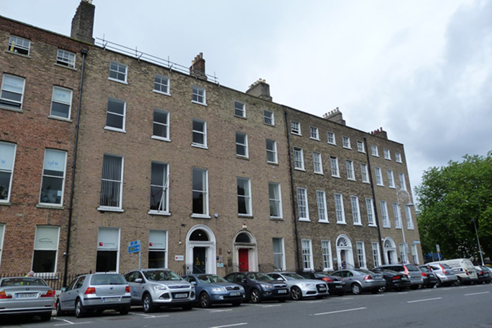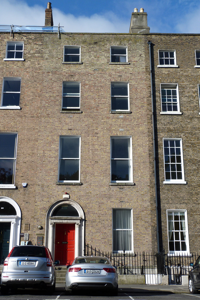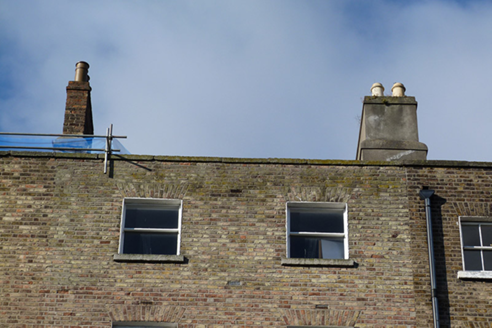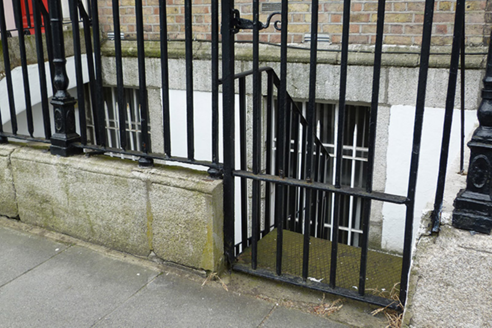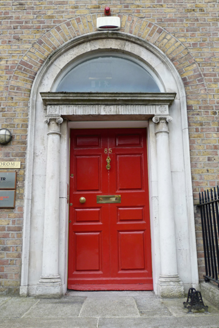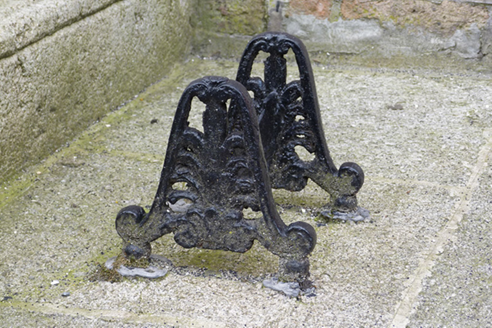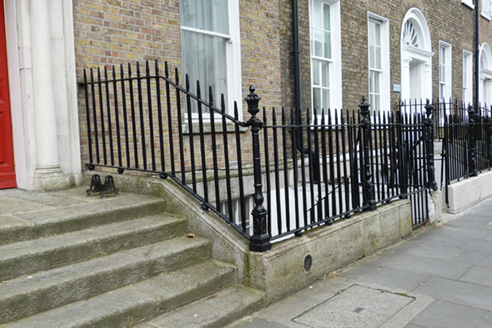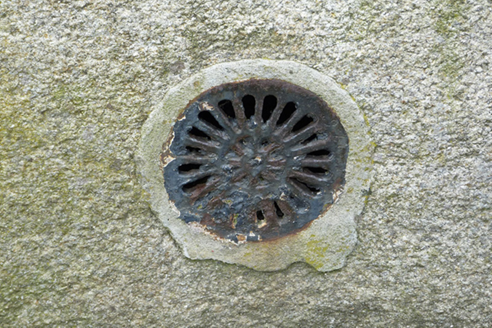Survey Data
Reg No
50100403
Rating
Regional
Categories of Special Interest
Architectural, Artistic
Original Use
House
In Use As
Office
Date
1780 - 1800
Coordinates
316506, 233533
Date Recorded
30/06/2016
Date Updated
--/--/--
Description
Attached two-bay four-storey former house over basement, built c. 1790 as part of terrace of eight (Nos. 80-87), with full-height rear return occupying width of plot, and additional single-pitched two-storey timber-framed abutment. Now in use as offices. Pitched roof to front, behind rebuilt brick parapet with granite coping and parapet gutters, and having two hipped roofs to rear perpendicular to street, wider eastern shared with neighbouring property. Shouldered chimneystacks, rendered to west with yellow clay pots and brick to east with terracotta pots. Flemish bond brown brick walls, rebuilt to top floor, and having granite plinth course over rendered basement walls. Square-headed window openings, diminishing in height to upper floors, with rendered reveals and painted granite sills. Single round-headed opening to rear, partly blocked. Largely replacement timber sliding sash windows with profiled horns, six-over-six pane to basement and second floor rear, and one-over-one pane elsewhere, with carved granite block-and-start surrounds, painted granite sills and wrought-iron grilles to basement. Round-headed limestone doorcase having moulded linings, cornice and fluted frieze on engaged Ionic columns, plain fanlight and eight-panel timber door with beaded munition and replacement brass furniture. Granite platform with cast-iron Anthemion boot-scrape and five granite steps. Basement area enclosed by wrought-iron railings with decorative cast-iron posts on carved granite plinth, latter pierced by decorative cast-iron grilles. Yard and carparking to rear of plot.
Appraisal
Likely built in conjunction with No. 84, the overall character of No. 85 Merrion Square is relatively well-retained, despite the insertion of some replacement fabric including the windows and fanlight. The good Ionic limestone doorcase serves to enliven the well-balanced, yet otherwise austere façade, whilst the Anthemion design of the boot-scrape is a common Greek Revival motif introduced in the early nineteenth century. The building is enhanced by the intact setting, which contributes to the intact appearance of the square. Developed as part of the Fitzwilliam Estate, Merrion Square is one of the best-preserved Georgian streetscapes in Ireland. The north, east and south sides of the square are lined with terraced houses of eighteenth and nineteenth-century date, while the west side is terminated by the garden front of Leinster House. The houses maintain a relatively uniform building height and design, attributed to standards promoted in Fitzwilliam's leases. Individuality was introduced through the design of doorcases, window ironwork and interior decorative schemes.
